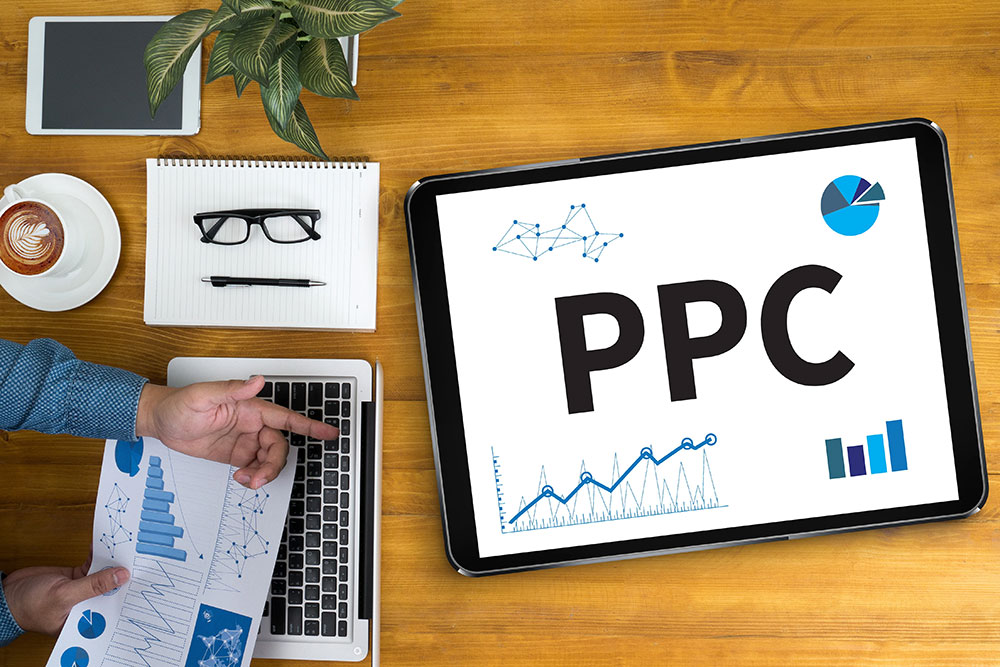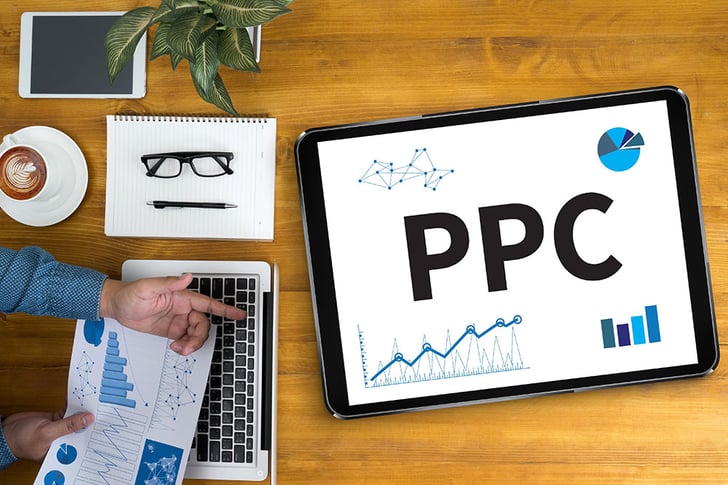



Healthcare software company marketers frequently utilize content marketing as a tactic. Pay per click advertising is also common. However, much of the time, these two tactics are approached separately, in a silo. But what if these two tactics were approached together for maximum benefit?
Content marketing is key because it just plain works. HubSpot found that 47% of buyers viewed between 3 and 5 pieces of content before reaching out to a company sales rep.
Pay per click advertising is also key because it works well on its own, but it can be good to have both an organic search engine result and a paid search engine result on the same page, according to Moz.

Read on for more on content marketing and pay per click marketing, and how you can fold PPC into your content marketing strategy.
Well-written relevant content is a foundation of a great website, app, or blog. If you’re already writing content utilizing targeted keywords that will help potential customers find your company through organic search, then you’re off to a great start with content marketing and search engine optimization (SEO). But don’t worry if you’re not (yet), it’s never too late to get started.
When your potential customer is a B2B company -- perhaps a health system, university, or medical insurance provider -- quality content that is updated or added on a regular basis is key to keeping organic search engine referrals arriving to your website.
Why? Because search engines value content that is fresh, meaning written recently, as well as content that is high-quality -- meaning, content that is written by someone of authority on the subject at hand, and not by bots, or written simply for a keyword.
Your content should also be updated on a regular basis. Ideally, new content is being added weekly. Unfortunately, a blog that was launched and hasn’t been touched in years hasn’t been helpful ever since.
To sum it up: Relevant, well-crafted content that is updated regularly signals to search engines that your website or blog is worth ranking. Then, when users search for keywords in your content, your content will show up higher in the search engine’s “SERPs” (search engine ranking pages).
Putting a PPC marketing strategy into place is often a first step for marketers when debuting a new software product or focusing on an existing product. But if you are more of a content-focused marketer, read through our article to discover how PPC marketing can improve your digital marketing strategy.
The benefits of pay per click are clear: PPC can help get traffic to a new website or landing page quickly, can help drive brand recognition and eventually organic clicks, and you can leverage your PPC data to see which keywords are working best, then continue to leverage those in your website content.
Pro Tip: PPC isn’t only for Google. Did you know that YouTube is the world’s second largest search engine, and Amazon the third-largest? So be sure to think about strategies to reach users on these search engines too, if it’s a good fit for your brand and product.
Rather than approaching content marketing and PPC marketing separately, we recommend approaching them simultaneously. It’s important to consider content as you are placing ads, and vice versa.
So, what are the types of content to consider for your Google, YouTube, Amazon or Facebook ads? Consider where your audience is in the sales funnel. Are they near the top, and just starting to research products? Then don’t try to drive a sale right then, because they may not be ready to make a buying decision.
For more general keywords related to your software, serve up helpful content and how-tos. As the potential customer moves toward the bottom of the funnel, perhaps searching in a more targeted way, serve them more in-depth content like white papers, e-books, and case studies.
Content can vary depending on your product, marketing personas, and your ideal customer. For B2B marketing -- in addition to case studies, e-books, and white papers -- content like FAQs, infographics, videos, and guides to help them through their decision-making process are key.
Organic traffic vs. paid traffic -- which is the better choice for healthcare software companies? The short answer: both. And these types of traffic should be considered and worked on in tandem. We believe that content marketing and pay per click marketing should be approached together for a well-rounded digital marketing strategy. Not only can quality content benefit PPC, but PPC is a great way to drive traffic to your content.
The endgame of this hybrid approach provides the maximum amount of exposure possible for your product. Great content, along with a solid social media strategy, takes care of inbound marketing, while PPC pairs with other outbound strategies, such as sales calls or direct mail, for a marketing plan that covers all the bases.


Spot On co-founder and partner Susie Kelley is dedicated to leveraging technology to advance innovative solutions in highly regulated industries. Driven by the opportunity to elevate brands, she co-founded Spot On in 2012 after having spent 15 years honing her marketing skills in an agency. Susie leads business development with a personal touch, focusing on building lasting relationships with clients to meet — and exceed — their goals for business growth.
Get the latest and greatest posts sent straight to your inbox.


